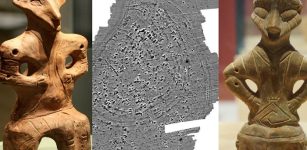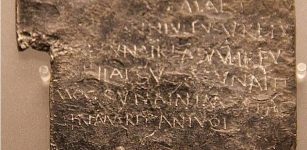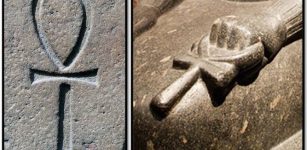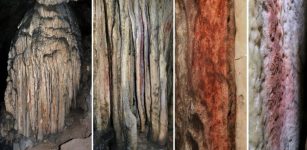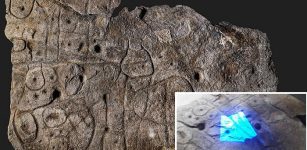Fossil Of Prehistoric Saber-Toothed Cat Found In Texas
Conny Waters - AncientPages.com - Important scientific discoveries do not necessarily come in grand or attention-grabbing forms. Sometimes, new findings emerge from unassuming and ordinary objects. Such is the case with a 6-centimeter-wide, unremarkable mass of bone and teeth that enabled a scientist at The University of Texas at Austin to broaden the known geographic range of a large feline species that roamed the Earth tens of thousands of years ago.
A skull from the saber-toothed cat Homotherium that is part of the Jackson School of Geosciences’ Vertebrate Paleontology Collections. Credit: The University of Texas at Austin
This unassuming specimen provided valuable insights into the distribution of this ancient predator, highlighting how even seemingly insignificant artifacts can contribute to our understanding of the natural world.
“You can’t even tell what it is, let alone which animal it came from,” said John Moretti, a doctoral student at the UT Jackson School of Geosciences who led research. “It’s like a geode. It’s ugly on the outside, and the treasure is all inside.”
The fossil appeared to be an ordinary, lumpy rock with a couple of exposed and worn teeth, having been submerged and tumbled along the Gulf of Mexico's floor for thousands of years before washing up on a beach. However, when the fossil was X-rayed at the University of Texas Computed Tomography Lab, Moretti discovered that there was more to it than meets the eye: a hidden canine tooth that had not yet erupted from the jaw bone.
This hidden tooth was the key evidence Moretti needed to identify the fossil as belonging to a Homotherium, a genus of large cats that roamed much of the Earth for millions of years. Since this cat was not fully grown when it died, its distinctive saber-like canine tooth had not yet fallen into its permanent position. Nestled inside the jaw, the tooth was protected from the elements, allowing it to remain intact and provide crucial information for identification.
“Had that saber tooth been all the way erupted and fully in its adult form, and not some awkward teenage in-between stage, it would have just snapped right off,” Moretti said. “It wouldn’t have been there, and we wouldn’t have that to use as evidence.”
Artist's impression of a saber-toothed cat. Credit: Adobe Stock - Daniel Eskridge
Homotherium spanned across habitats in Africa, Eurasia and the Americas. This robust cat was comparable in size to a modern-day jaguar, characterized by an elongated face, lanky front legs, and a sloping back that terminated in a bobtail. Notably, their serrated canine teeth were covered by large gum flaps, similar to those found in domestic dogs today.
Fossil evidence of Homotherium has been discovered in various regions of Texas. Still, a recent find provides the first indication that this formidable feline roamed the now-submerged continental shelf connecting Texas and Florida. Scientists hypothesize that this area served as a Neotropical corridor, a stretch of humid grassland that facilitated the movement of animals such as capybaras and giant armadillos, which would not have ventured farther north, from Mexico to Texas and ultimately to Florida.
In the fossil specimen that is the subject of this research paper, two teeth are visible breaking out at the bottom: an incisor, and the tip of a partially-erupted canine. The scale bar at the top right of the image is 1 centimeter. Credit: Sam Houston State University
The discovery of Homotherium fossils along this corridor provides scientists with valuable insights into the ecological dynamics of this landscape during the Late Pleistocene era. As Moretti explained, the presence of these large carnivorous cats offers a glimpse into the intricate web of interactions that shaped the broader animal community at the time. Apex predators like Homotherium were crucial in regulating prey populations and influencing regional biodiversity.
Interestingly, the fossil specimen in question was unearthed over six decades ago on McFaddin Beach, south of Beaumont, by Russell Long, a professor at Lamar University. However, U.S. Rep. Brian Babin, a former student of Long's who worked as a dentist for 38 years, donated the specimen. Babin's training in paleontology and dentistry enabled him to recognize the seemingly ordinary rock as an upper jaw bone and teeth, highlighting the importance of interdisciplinary knowledge in scientific discoveries.
The study was published in The Anatomical Record.
Written by Conny Waters - AncientPages.com Staff Writer









